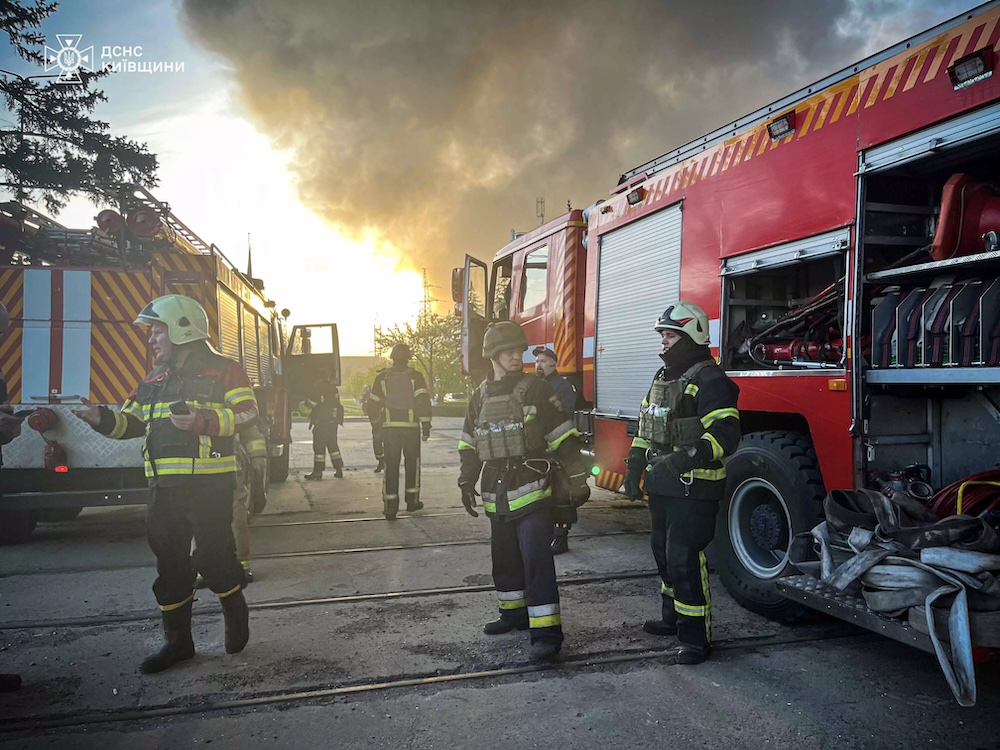


At least four people were killed, power facilities in several regions were damaged, and emergency outages were imposed before grid operators moved most areas to scheduled hourly cuts. Officials said stabilisation work was under way by Saturday evening, with crews repairing high-voltage lines and substations.
Ukraine’s energy minister Svitlana Hrynchuk said the scale of direct ballistic strikes on civilian energy assets was among the largest of the war. She confirmed emergency shutdowns to protect equipment and enable phased restoration, noting that hourly schedules were introduced to give consumers predictability until the system steadied. Kyiv, Poltava and Kharkiv regions reported grid damage as operators isolated faults and rerouted flows to maintain essential supply.
Casualties were reported in Dnipro and Kharkiv. Authorities said three people were killed and 12 injured when a drone struck a residential building in Dnipro, and one person died in a separate incident in Kharkiv region during strikes on energy infrastructure. Ukraine’s air force said most of the 45 missiles and more than 450 drones were intercepted, but multiple sites suffered direct hits.
Regional officials also reported drone attacks on energy infrastructure in the south. In Odesa region, an energy facility was hit late on Friday, though no casualties were recorded. Emergency services worked through the night to clear debris and assess damage as grid managers prioritised restoring transmission capacity to affected districts.
Thermal generation sustained further losses. State-owned Centrenergo said all of its thermal power plants were forced offline after direct strikes, describing the assault as the heaviest against its assets since the full-scale invasion. Private operator DTEK reported another attack on one of its thermal stations, adding to repeated hits in recent weeks. The immediate loss of baseload capacity increased reliance on imports, hydropower and demand management.
Naftogaz reported continued pressure on the gas sector, stating that Russia has targeted gas infrastructure nine times since early October, injuring a worker and damaging production assets. In parallel, Ukraine announced an agreement to import at least 300 million cubic metres of liquefied natural gas via Poland’s Orlen to help secure supplies through the heating season and into early 2026.
Municipalities introduced contingency measures as repairs progressed. Local authorities in Kremenchuk and Horishni Plavni said generators were being used to maintain water supplies and essential services while grid connections were stabilised. Grid operator coordination focused on evening peak demand, when consumption limits remained in force in several regions to reduce stress on damaged nodes.
President Volodymyr Zelenskyy said Russia had massed forces near Vovchansk in Kharkiv region and linked intensified assaults around Pokrovsk to Moscow’s effort to show battlefield gains. Independent assessments noted limited Russian advances near the mostly destroyed, partly Russian-held city and a continued objective of bringing Kharkiv within tube-artillery range. Ukrainian units reported repelling a symbolic flag-raising in Vovchansk.
Moscow said its “massive strike” used long-range precision weapons against Ukrainian weapons production and energy facilities, characterising the barrage as retaliation for Ukrainian strikes inside Russia. Kyiv, meanwhile, reported long-range drone attacks on Russian energy sites and further incidents at an electricity substation in northern Russia.
Officials in Kyiv reiterated that outage timetables are standard stabilisation measures after high-impact strikes and rejected suggestions of inadequate preparation. Authorities urged households and businesses to conserve electricity during evening peaks while repairs continue and additional imports and equipment from partners are brought online ahead of winter demand.